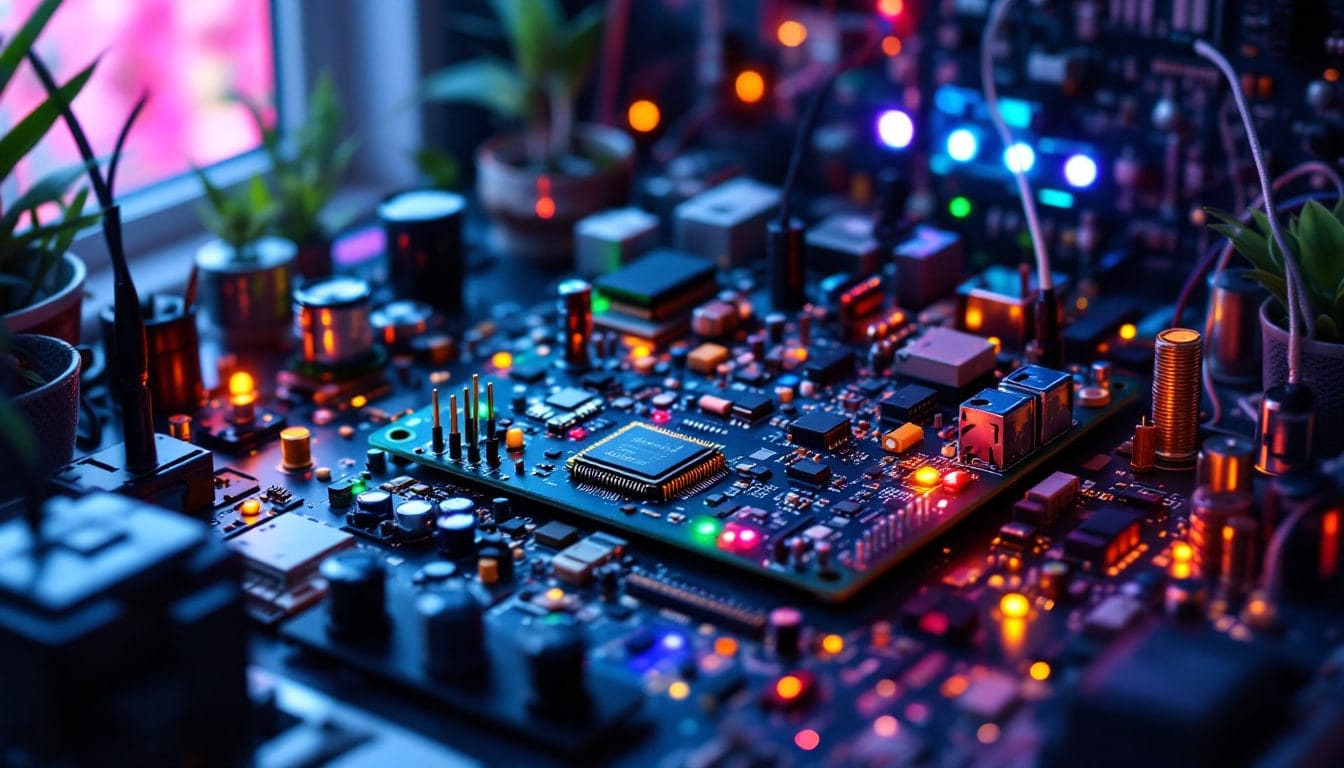Embedded systems, true engines of technological innovation, are computing devices integrated into various appliances to perform specific tasks. They can be found everywhere, from automobiles to household appliances, enhancing the efficiency and functionality of our everyday technologies. By integrating hardware and software components, these systems play a crucial role in improving processes, communication, and automated control. Their impact is visible in the modern economy, facilitating a multitude of previously complex or impossible functions.
Table des matières
ToggleGlossary on Embedded Systems
An embedded system is a specialized computing system that is an integral part of a device or a larger machine, designed to perform one or more specific functions, often in real time. Unlike desktop computers or smartphones, these systems are often discreetly integrated into the device they control.
One of the fundamental aspects of embedded systems is specific hardware architecture. This involves meticulous choices at the level of processors, such as optimal power and performance for minimal energy consumption. These systems are often based on microcontrollers or microprocessors specifically designed to minimize resource use, like energy, while maximizing efficiency.
The programming language is also a central element of embedded systems. Engineers typically use languages such as C or assembly to develop embedded system applications, due to their ability to directly manage hardware resources efficiently and accurately.
When it comes to embedded operating systems, there are several options, some generic and others specifically designed for particular applications. For example, FreeRTOS is a widely appreciated open-source operating system in the development of real-time applications that require a small memory footprint.
One of the challenges of embedded systems lies in their secure development. With the increase of cyber threats, designers must ensure that these systems are secure against intrusions, which often requires developing customized solutions to address the specific problems of each application.
Connectivity is also an important aspect. Today, most embedded systems are designed to communicate with other networks and devices, paving the way for embedded intelligence. This allows for data exchanges between devices, making systems autonomous and intelligent, capable of making decisions based on real-time data.
With the advent of Industry 4.0, embedded systems play a crucial role in the automation and optimization of industrial processes. They now integrate advanced technologies such as <strongartificial intelligence and machine learning, which require lightweight yet powerful devices with state-of-the-art embedded flash memory.
The adoption of new memory technologies is of paramount importance to enhance the capabilities and performance of embedded systems. This allows for optimizing the storage and management of large amounts of data, crucial for modern industrial applications.
FAQ: Understanding Embedded Systems in Few Words
Frequently Asked Questions
Q: What is an embedded system?
A: An embedded system is an integrated computing system designed to perform one or more specific functions in real time. These systems are often integrated into larger devices and are designed to be autonomous, reliable, and efficient in their mission.
Q: Where are embedded systems typically found?
A: Embedded systems are commonly found in a variety of devices such as mobile phones, household appliances, cars, cameras, and more. Their usage is ubiquitous and essential in our daily lives.
Q: What are the key components of an embedded system?
A: A typical embedded system generally consists of a microprocessor or microcontroller, memory, a set of input and output devices, and dedicated software that drives the whole system.
Q: What is the difference between an embedded system and a conventional computer system?
A: Unlike a conventional computer system that is designed to be versatile and user-programmable, an embedded system is specifically designed to perform certain defined tasks and is often programmed once for all.
Q: Why are embedded systems important in modern technology?
A: Embedded systems are essential because they enable modern devices to perform complex functions efficiently and precisely. They promote automation, reduce energy consumption, and increase the reliability of electronic devices.





